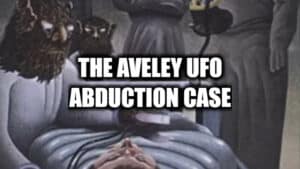
On a quiet October night in 1974, the Avis family’s routine drive through rural Essex, England, took an extraordinary turn. John Avis, his wife Elaine, and their three children encountered a mysterious green mist that enveloped their car, leading to a series of events that would become one of Britain’s most intriguing UFO cases.
Known as the Aveley abduction, this incident involved telepathic beings, a clinical examination, and a cryptic reference to Phobos, a Martian moon. Decades later, the Aveley abduction remains a cornerstone of UFO research, blending vivid eyewitness accounts with the challenges of verification.
This article explores the details of the abduction, the aliens described, the investigation, and the case’s place in UFO history, offering a balanced perspective for those curious about the paranormal.
The Abduction Event: A Detailed Account
On October 27, 1974, John Avis (32), Elaine Avis (28), and their three children—Kevin (10), Karen (11), and Stuart (7)—were driving home from Harold Hill to Aveley, Essex, along Hacton Lane. As they navigated the quiet country road, they suddenly encountered a thick, green mist that seemed to come out of nowhere.
The mist was so dense that it obscured their vision, and their car’s radio began to crackle and smoke. The vehicle’s lights dimmed, and the engine stalled, leaving the family stranded in the eerie fog. When the mist finally dissipated, they found themselves further down the road than they remembered, with no recollection of how they got there, a phenomenon known as “missing time” .
In the days and weeks that followed, John and Elaine began experiencing vivid nightmares and strange dreams they couldn’t explain. John’s dreams often involved being examined by strange creatures in a clinical setting, while Elaine reported similar visions of being on tables surrounded by unknown beings. Troubled by these recurring nightmares, the family sought help from Leonard Wilder, a hypnotherapist known for his work with UFO abduction cases.
Under hypnosis, John recalled being taken aboard a spacecraft by tall, humanoid beings. These beings, described as wearing surgeon-like suits with hoods, had pink eyes and communicated telepathically. John remembered being placed on a table and examined with a bar-like instrument. When he asked where the beings came from, they showed him what he described as “a map but not a map” and mentioned “Phobos,” a moon of Mars. Additionally, John recalled a smaller, furry, bat-like creature that made chirping sounds and seemed to assist the taller beings.
Never Miss A Paranormal Story!
Newsletter subscribers get insider access to the latest paranormal posts!
Your email is safe with us and you can unsubscribe at any time!
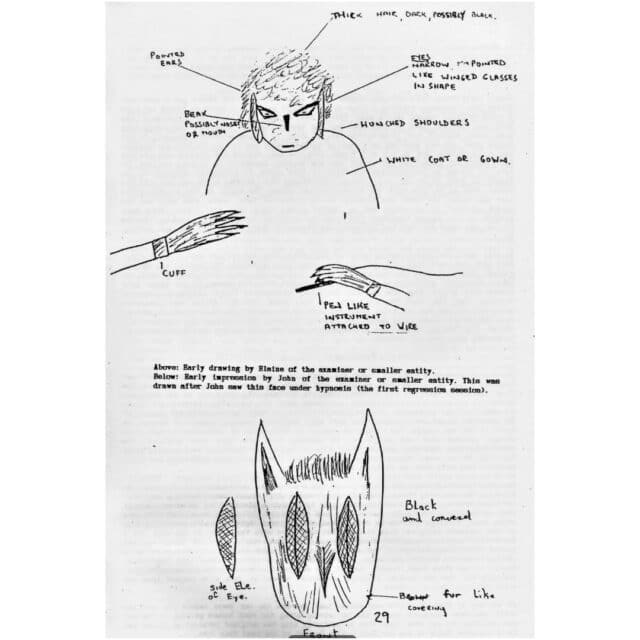
Elaine also underwent hypnosis and reported similar experiences, including dreams of being examined on tables. The children, though younger at the time, also had vague recollections of strange occurrences, though their memories were less detailed. The family’s consistent testimony, especially under separate hypnosis sessions, suggested a shared experience that went beyond mere coincidence.
The aftermath of the encounter was profound for the Avis family. They reported ongoing paranormal activity, including poltergeist-like phenomena in their home and frequent bouts of sleep paralysis, which added to their distress. These experiences prompted them to contact UFO investigators by mid-1977, seeking closure on the events of that October night .
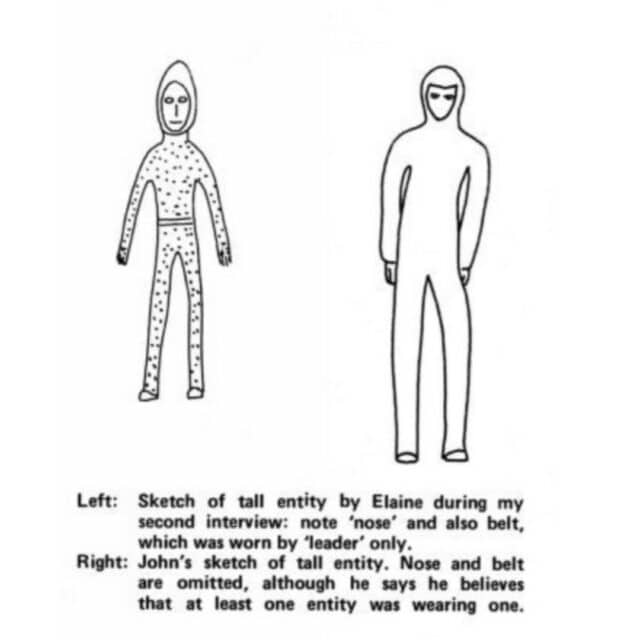
The Aliens: Description and Analysis
The beings described in the Aveley abduction are particularly noteworthy for their distinct characteristics. The tall humanoids, often referred to as “Nordic” types in ufology, are typically depicted as benevolent and human-like, with fair hair and blue eyes. However, the beings encountered by John Avis deviated from this archetype. They wore surgical attire, had pink eyes, and communicated telepathically, which aligns more closely with other abduction narratives where abductees report physical examinations by advanced beings. Their description as “peaceful” yet clinical suggests a blend of benevolence and detachment, a common theme in abduction accounts.
The presence of the smaller, bat-like creature is less common in abduction reports. Described as having a fur-like covering, large eyes, and making chirping sounds, this entity adds an element of high strangeness to the case. Such descriptions sometimes appear in other abduction accounts, where witnesses report seeing animalistic or insectoid beings alongside more humanoid aliens. For example, a 1957 Cincinnati case involved a nurse encountering a praying mantis-like entity after a UFO sighting. The bat-like creature’s role as an assistant to the taller beings further emphasizes the hierarchical nature often attributed to alien entities in ufology .
The imagery of the beings, as described by the Avis family and later sketched during investigations, has been compared to cultural archetypes. The tall, hooded figures in surgical suits evoke a sense of clinical precision, possibly reflecting anxieties about medical procedures prevalent in the 1970s. The bat-like creature, with its menacing appearance, taps into primal fears of the unknown. Some researchers have noted that these descriptions bear an eerie resemblance to fictional creatures from 1960s science fiction, such as those in the TV series Lost in Space, raising questions about the influence of popular culture on abduction narratives.
| Feature | Tall Humanoids | Bat-Like Creature |
|---|---|---|
| Appearance | Hooded surgical suits, pink eyes | Furry, large eyes, pointed ears |
| Communication | Telepathic | Chirping sounds |
| Role | Examiners, leaders | Assistant to humanoids |
| Cultural Comparison | Nordic aliens, sci-fi doctors | Insectoid or animalistic entities |
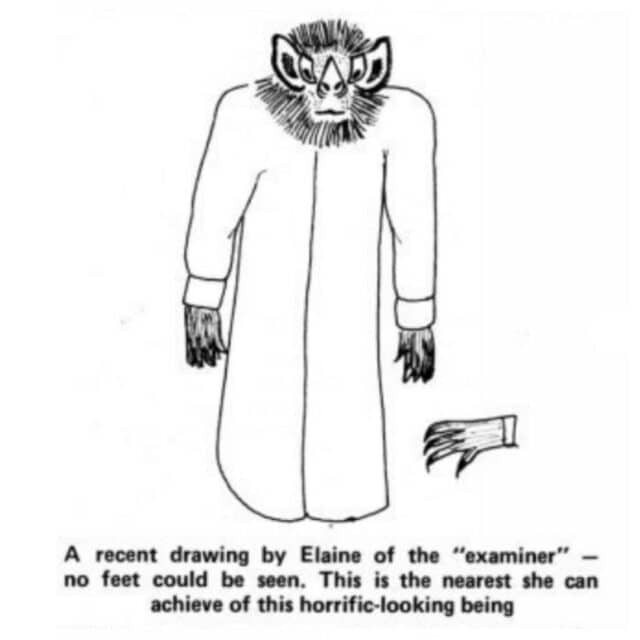
Investigation and Analysis
The Aveley abduction was extensively investigated by British ufologist Andrew Collins, who compiled a detailed report in January 1978, calling it “probably the most important British case ever”.
Collins’ work, published in Flying Saucer Review, documented the family’s experiences and the hypnosis sessions conducted by Leonard Wilder. Wilder, a hypnotherapist with experience in UFO cases, played a pivotal role in uncovering the alleged abduction memories. His sessions with John and Elaine revealed consistent narratives of being taken aboard a spacecraft, examined by alien beings, and shown a map referencing Phobos.
Wilder’s approach involved querying the couple’s subconscious to determine if their dreams masked real abduction memories. John was the first to agree to hypnosis, while Elaine initially declined, preferring to move on. Due to Kevin’s young age, hypnosis was deemed inappropriate for him. The consistency of the memories uncovered—particularly the detailed descriptions of the beings and the spacecraft, lent weight to the case within UFO research circles.
However, the use of hypnosis in this case, as in many others, has been subject to criticism. Skeptics argue that hypnosis can lead to false memories or confabulation, where individuals incorporate external suggestions or expectations into their recollections. Studies, such as one published in Perceptual and Motor Skills in 1992, suggest that hypnotic amnesia and suggestibility can amplify such effects. The lack of physical evidence, such as photographs, radar data, or corroborating witnesses further complicates the case.
The green mist and car malfunctions could potentially be explained by natural phenomena or technical issues, though the family’s consistent testimony and the detailed nature of their abduction memories suggest a more complex experience.
The fallout for the Avis family was significant. Beyond the initial trauma of the encounter, they experienced ongoing paranormal phenomena, including poltergeist activity and sleep paralysis, which disrupted their daily lives. These experiences, underscore the lasting psychological impact of the event, whether it was extraterrestrial or psychological in origin.
Place in UFO History
The Aveley abduction occupies a unique and significant place in UFO history, particularly within the British context. Often cited as one of the most important British UFO cases, it stands out for several reasons. Firstly, it involves the alleged abduction of an entire family, which is relatively rare in the annals of ufology. Most abduction cases feature single individuals or couples, making the Aveley case distinctive for its familial aspect .
Secondly, the case emerged during a period when UFO sightings and abduction reports were gaining traction in popular culture, particularly in the 1970s. This era saw an increase in media coverage of UFO phenomena, with films like Close Encounters of the Third Kind (1977) and TV shows like Project UFO contributing to public fascination with extraterrestrial encounters. The Aveley case, with its detailed narrative and the use of hypnosis to uncover memories, fit into this cultural milieu, reflecting the zeitgeist of the time.
Within UFO research communities, the Aveley abduction is frequently referenced as a classic example of an abduction scenario, complete with missing time, telepathic communication, and physical examinations by alien beings. The mention of Phobos, a Martian moon, adds an intriguing layer, connecting the narrative to astronomical interests and speculations about extraterrestrial origins. Phobos, with its irregular orbit and low density, has long been the subject of scientific curiosity, with missions like Japan’s Martian Moons eXploration (MMX) aiming to study its origins. While the connection to Phobos in the Aveley case is likely coincidental, it underscores how abduction narratives often intertwine with real-world scientific mysteries.
However, the cultural impact of the Aveley abduction beyond UFO enthusiast circles is relatively limited. Unlike some American cases, such as the Betty and Barney Hill abduction or the Travis Walton incident, which have achieved broader recognition through books, documentaries, and media coverage, the Aveley case remains less known to the general public. This is evident from the fact that Aveley’s Wikipedia page does not mention the incident, as noted in some online discussions. Despite this, the case continues to be studied and discussed within ufology, with various articles, blog posts, and forum threads keeping the story alive .
In academic circles, the Aveley case has also been referenced in discussions about the psychological and cultural aspects of abduction claims. A 2000 article in Perceptual and Motor Skills draws parallels between UFO abduction narratives and historical accounts of witchcraft, suggesting that both may serve similar psychological functions in explaining anomalous experiences. What it doesn’t do is explain what the anomalous event was that they experienced.
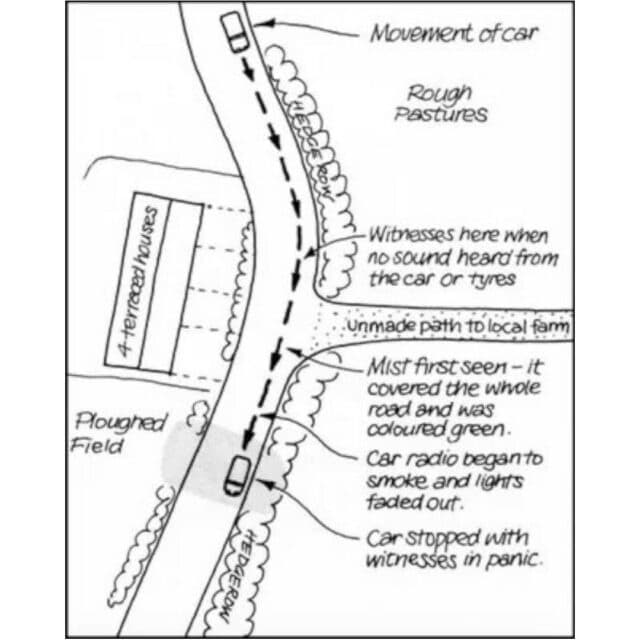
Skeptical and Alternative Perspectives
Skeptics offer several alternative explanations for the Aveley abduction.
One possibility is that the family experienced a combination of environmental factors and psychological phenomena. The green mist could have been a natural fog or a misperception, while the car’s malfunction might have been due to electrical issues.
The missing time could be attributed to disorientation or a brief loss of consciousness. The abduction memories, uncovered through hypnosis, might be the result of suggestibility or the influence of popular culture, which was saturated with UFO themes in the 1970s.
Another perspective is that the case represents a form of mass hysteria or shared delusion, where the family’s anxiety and stress led to collective hallucinations or false memories. However, proponents of the case argue that the consistency of the family’s stories, especially under separate hypnosis sessions, lends credibility to their claims.
The lack of physical evidence remains a significant hurdle for those who view the case as genuine. As noted in general discussions of alien abductions, such claims often rely heavily on witness testimony, which can be unreliable.
Hypnosis, while useful for uncovering suppressed memories, is also prone to introducing errors or exaggerations, as supported by research into hypnotic suggestibility. But, with multiple people going under hypnosis and giving corroborating stories, the likelihood of memory corruption seems unlikely.
You Might Also Like:
Conclusion
The Aveley abduction of 1974 stands as a testament to the enduring mystery of UFO encounters. Whether one views it as a genuine encounter with extraterrestrial beings or a product of human psychology and cultural influences, the case offers valuable insights into the human psyche and our collective imagination. For believers, it is a compelling narrative of alien visitation, while for skeptics, it serves as a cautionary tale about the fallibility of memory and the power of suggestion.
The Avis family’s experience, marked by trauma and ongoing paranormal phenomena, underscores the profound impact of such events, regardless of their origin. As we continue to explore the cosmos and our place within it, stories like Aveley remind us of the thin line between the known and the unknown, challenging us to keep an open mind while seeking truth in the shadows.

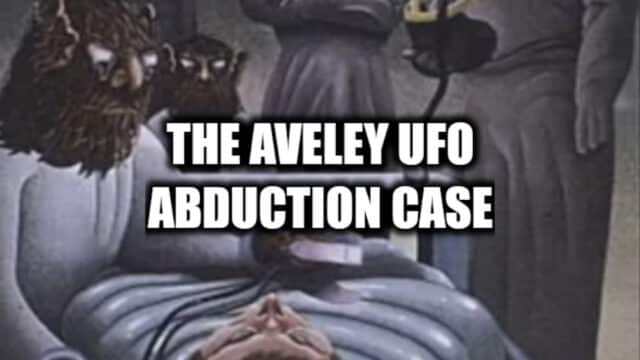

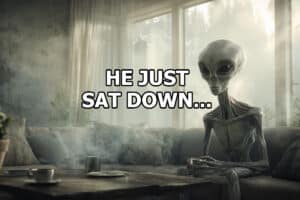
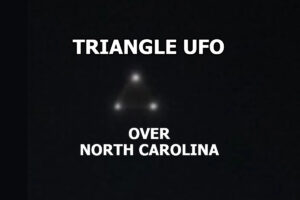
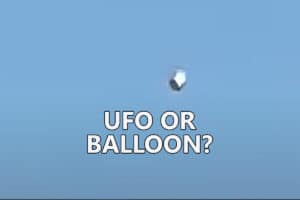
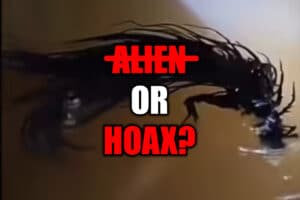




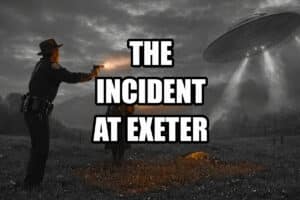
2 Responses
This is a new tale for me, but I got the impression it is a well known story. I am not sure I believe this family was actually abducted but it is compelling for sure. It was fascinating to say the least with several well known tropes of alien abduction: missing time, strange eyes, surgeon attire and surgical tables, and telepathic messages. Wow!
The bat creatures are fairly unique though. Makes me wonder who they were and where they came from.